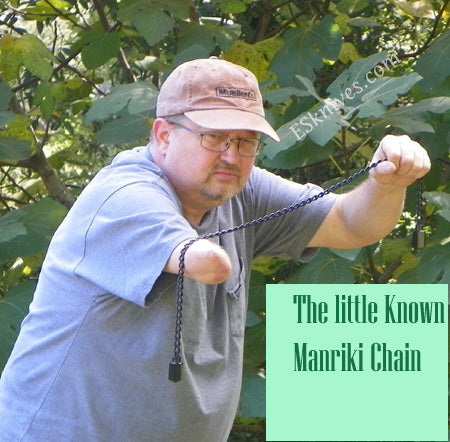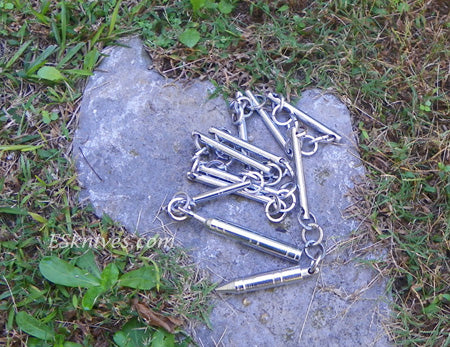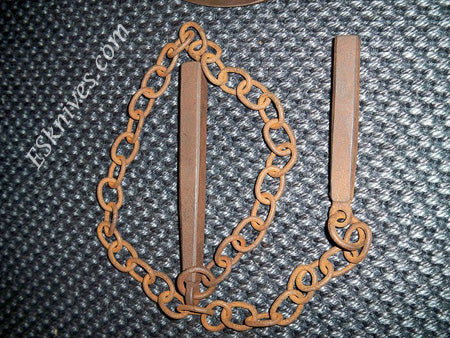People love throwing stuff. We at ESKNIVES love to throw knives and throwing stars. There is nothing more satisfying than hearing that "thunk" sound as a blade sticks in the wooden target.
Shurikens are a lot of fun. I thought I would write in this article about Cold Steel Shurikens. Cold steel Sure Strike Throwing stars are a great way to get started in the throwing game.
Sure Strikes aren't like the cheap, shoddy throwing stars you see at flea markets, guns shows, and in martial arts magazines. That's because they are laser cut from high carbon steel that's been heat treated to a hard spring temper before sharpening and then given a black, baked-on epoxy finish to protect them from the elements. Professionally weighted, balanced and fully sharpened ends. Remember that these are serious weapons and not toys. They will hurt people if not handled responsibly.

Cold Steel Sure Strikes
The Cold Steel Sure Strikes are modeled after the Shuriken that has been used for centuries in China and Japan. Sure Strike throwing stars come in three sizes, light, medium and heavy. Points are sharp and no need for sharp edges. You can throw them for a long time without dulling the point. They fly effortlessly. You can throw the sure strike overhand like a baseball, side arm, underarm or back hand like a flying saucer. When thrown straight, it hits on at least one point every time. That's why they are called Sure Strikes.
All three share the same sized diameter of 5.75". Where they very is in thickness which varies the weight. The light is 2mm thick at 2.8 oz, The medium is 4mm thick at 4.2 oz and the heavy comes in at 6mm and 6.4 oz.

Sure Strikes-Light, Heavy and Medium
These sure strikes really help to get your ninja on. I have thrown all three sizes. I prefer the heavy sure strike. The heavy sure strike is a heavy thick piece of steel. They seem to stick better than the light. The one problem I have encountered is when they stick, sometimes I have to pull them out of the target with pliers. After throwing them for awhile, I preferred the overhand method as opposed to the underhand (frisbe like) throw.
I have found that they live up to their name sure strike,
You throw them they stick. Even the light version did well. It still has some weight behind it and easily sinks into what ever you throw it at.
Great for new people. These stars stick each time and help boost your confidence. You don't have to be that good to make one stick. Take it from me, I used to be right handed before I lost my arm and even I can make them stick with a left hand throw. After continued use the paint on the outside will rub off some to reveal the silver metal.
These are the stars that stick every time, the Sure Strikes from Cold Steel. Have fun with them and be safe!













 The
The 





